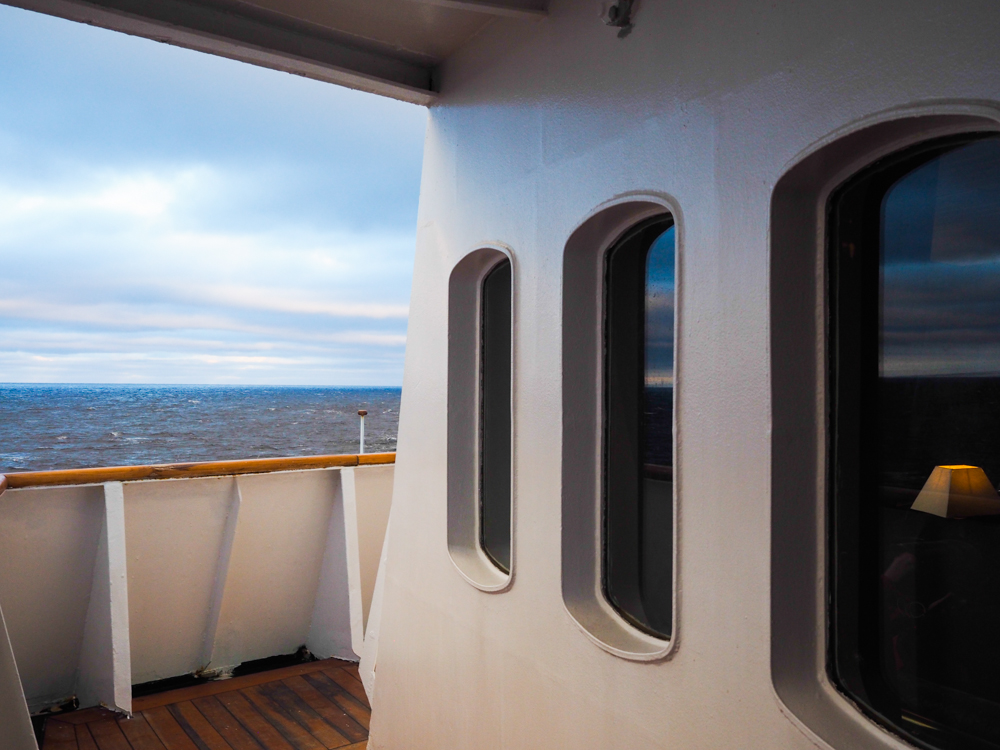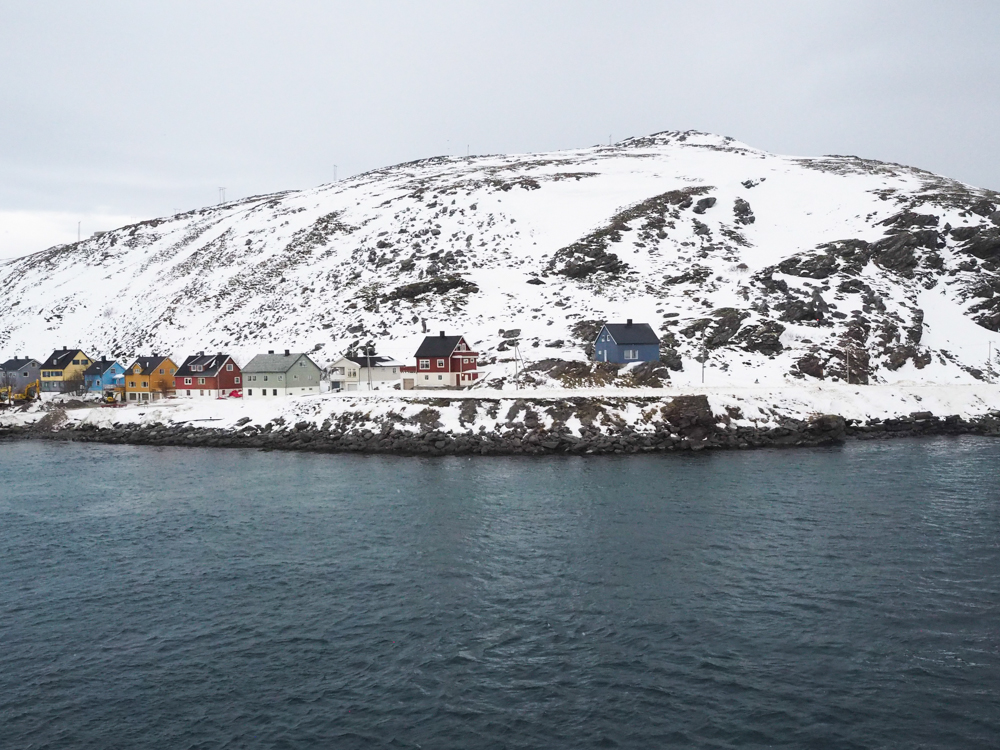Some consider it only as a means of transport, some like it for the hearty dinners, the jacuzzi or the abundant extra programs. I fell in love with the Norwegian Hurtigruten cruises because I had the opportunity to dive in the Norwegian landscape of fjords and the show of colors and lights of which you can never get bored or weary. Besides I have been to the northernmost point of Europe and seen an ice hotel from the inside.
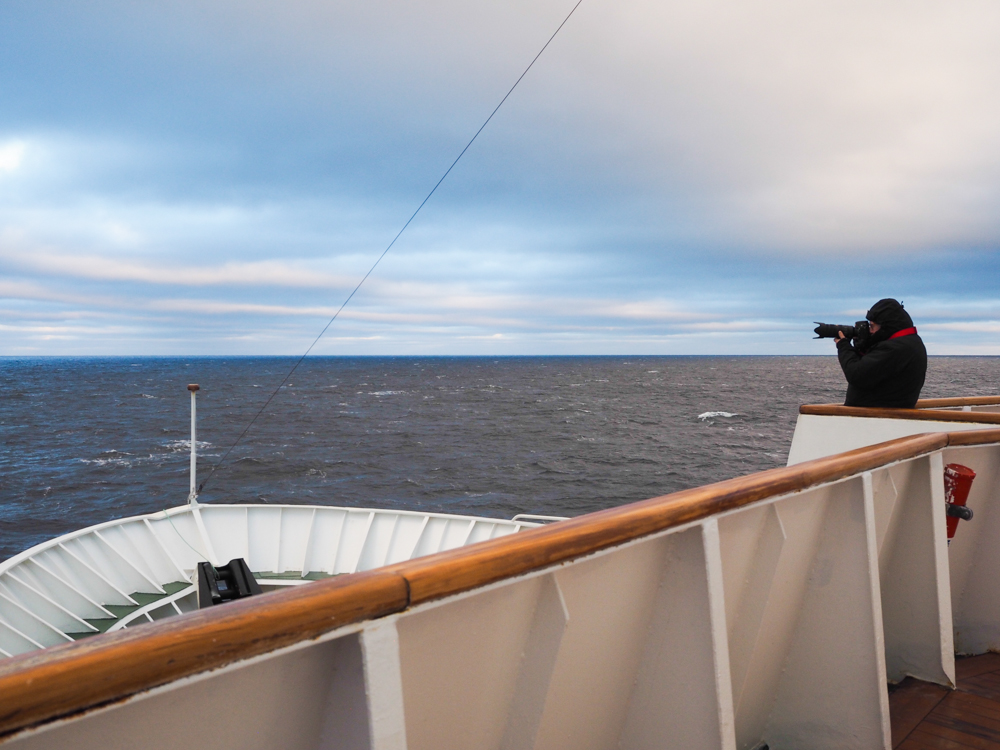
The three passenger buses and some other vehicles that headed for Nordkapp all lined up. During the winter, you can only reach the monument marking the northernmost point of the continent in a convoy, escorted by a snow-plough. The wariness and all the precautions seemed unnecessary as the road looked absolutely clear – I thought with an indulgent smile on my face.
Then my smile turned into horror when we met a bus halfway in the ditch, which despite all the precautions, had slipped off the road. Although it was almost noon, the snow-covered landscape was illuminated as if by the rising sun in the early morning. I was spellbound, gazing at the lights, just like the rest of my trip to Norway.
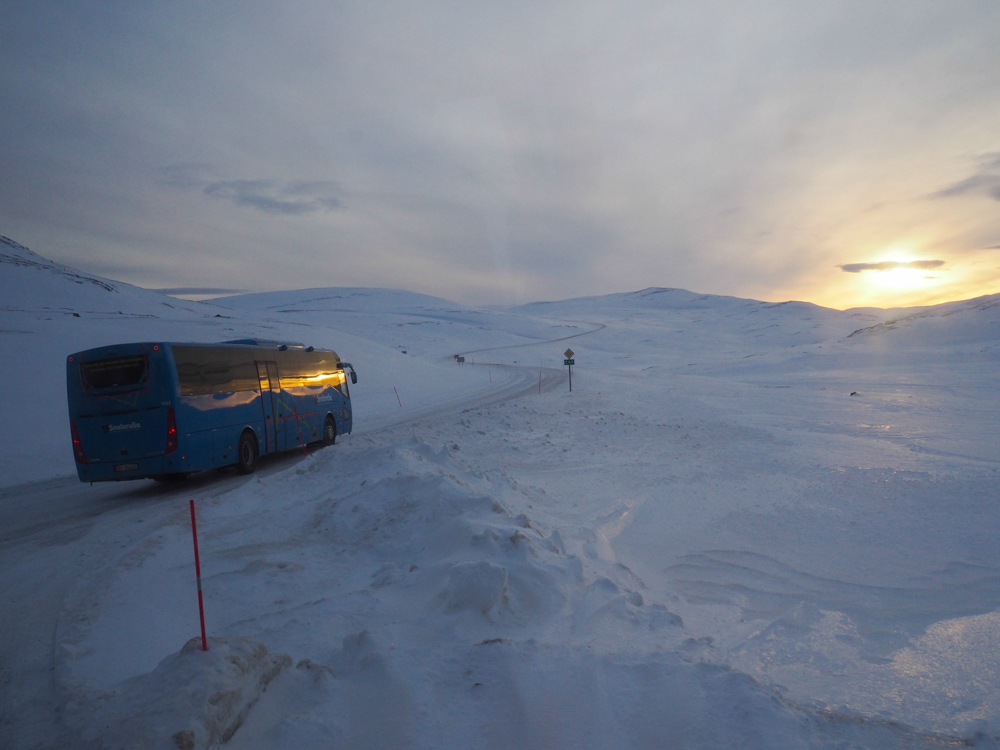
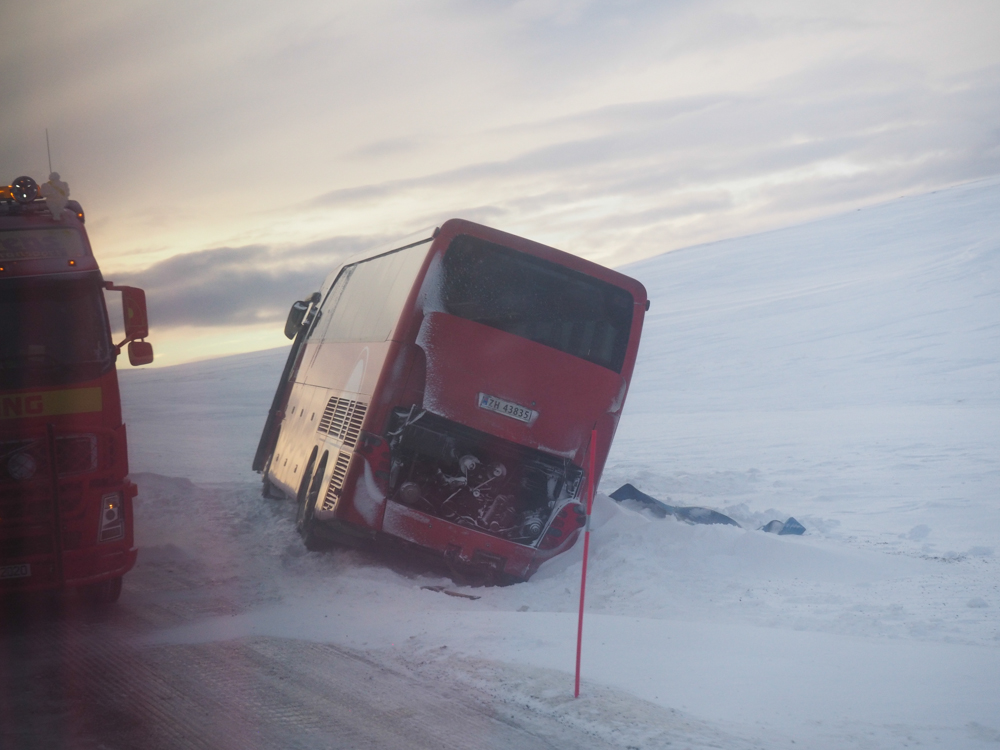
Tourist are flocking to the North Cape
As we arrived at the monument, the selfie-storm began. This time however, I was not worried a bit about the amount of time Asian tourists would take to click a selfie in every possible angle and pose. The ice-cold biting wind helped, and most of the visitors finished as fast as possible and sought shelter in the nearby souvenir shop.
The monument stands on a deserted, windy plateau with the most amazing, majestic view to a narrow cliff, extending deep into the sea. The cliff is technically even further to the north, however, it would have been quite hard to build a tourist center there, so they cheated a bit when marking the northernmost point.
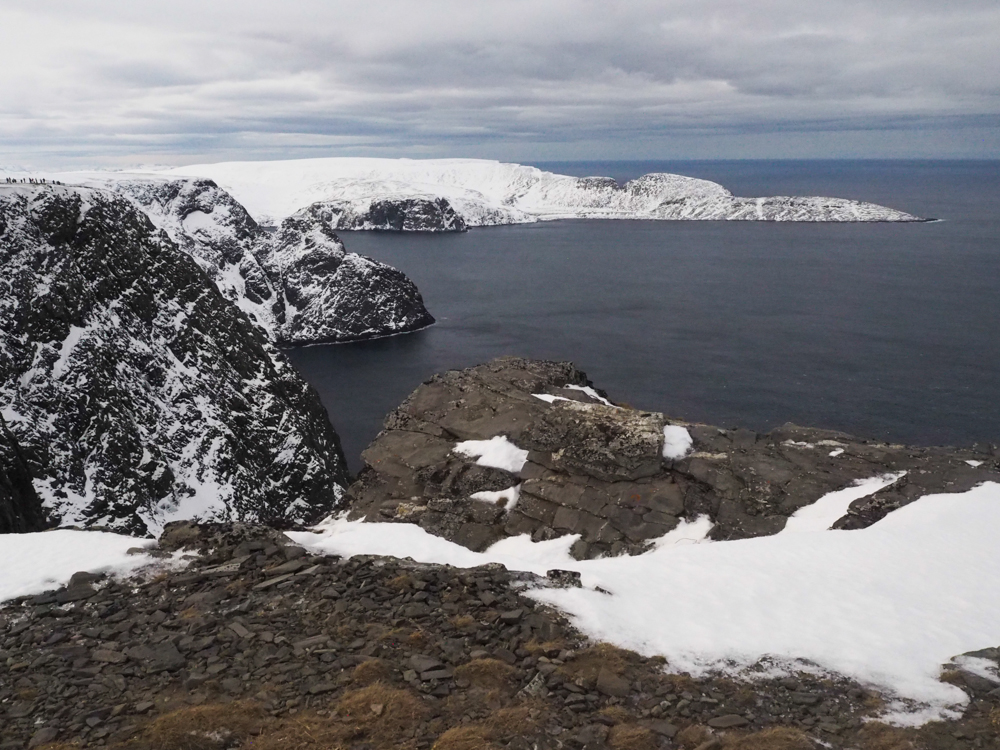
Although the general view is that Hammerfest is the northernmost town in Norway (not considering Svalbard), Honningsvåg is in fact located further to the North. Sure it is only listed as a town “by grace”, as according to Norwegian legislature a town has to have at least 5000 residents. Honningsvåg is inhabited by less than half of that.
Tourists continually flock to the monument. It was the Thomas Cook agency that first brought visitors here, long before the road was built to the plateau. The guests arrived by ships, and were hauled by the local fishermen up the steep mountain. Although, there were not so many curious visitors back then. Today, lots of tourists’ buses head for Nordkapp, but not all of them reach the monument. The road is often closed due to strong winds and snowstorms.
This trip to Nordkapp was an optional tour during the cruise I was taking from Tromsø, up to the Russian border and to Kirkenes.
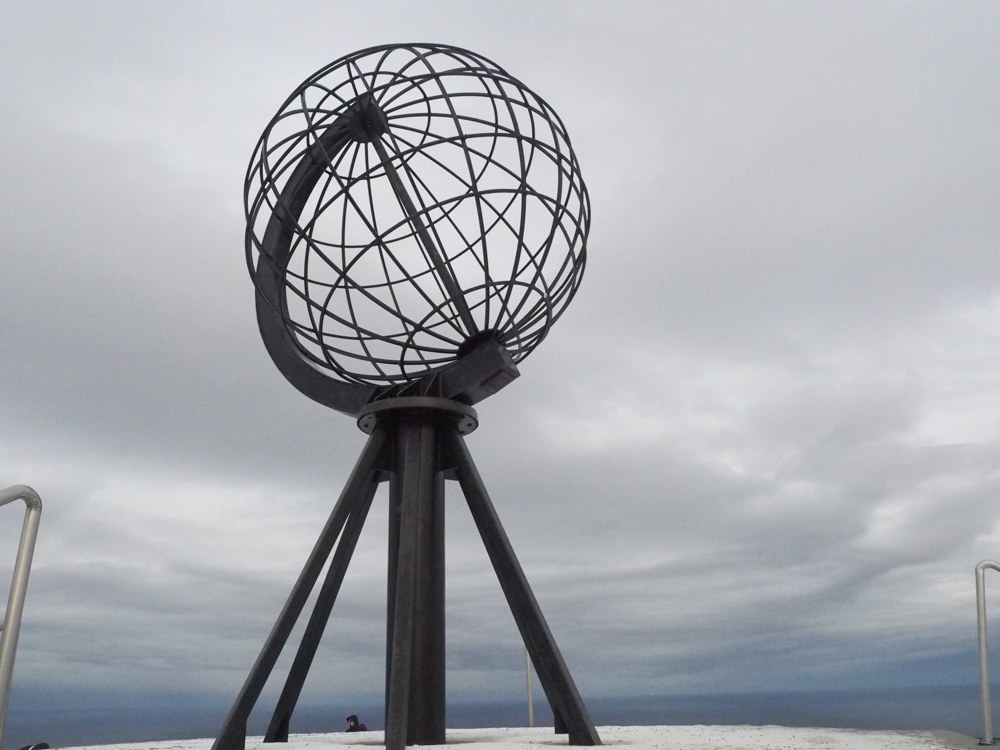
Cruising – not cheap, but awesome
I was never really interested in cruise ships. I thought it would be inconvenient to spend only a day in the various harbors, and that I would get frustrated when I could not create my own route and being confined with strangers on a vessel for a couple days. However, when I first tried Hurtigruten in the summer two years ago, on a short trip along the Norwegian shores, I was immediately enthralled. I already decided back then, that I must spend more time on it.
The Hurtigruten has a special place in the hearts of Norwegians. The voyage from Bergen to Kirkenes is considered to be a normal way of public transportation, however, it is more of a splendid domestic vacation for parents and grandparents, usually bought by their children and grandchildren. However, foreigners – mostly older German travelers – are also developing a liking for the services of Hurtigruten.

The Hurtigruten line has sailed the Norwegian shores since 1893. Currently, with a fleet of 14 ships, it operates daily cruises along the coast from Bergen all the way to Kirkenes. In 6-7 days they complete the route of 2400 kilometers. The whole round-trip is sold from 1600 USD, but in peak season, depending on the type of ship and cabin you choose, the rate can be as high as 20 000 USD.
Moreover, this is only the basic fare which can be complemented by full service and a great many optional tours: such as sightseeing in towns, glacier and fjord tours. Most passengers buy a round-trip, as on both ways different attractions await the curious. On the way out, the ship stops at some cities only at night, when optional trips are scarce (although they may offer a night trip on snow mobiles and hunting for the northern lights), but on the way back the ship stops again this time during the day.
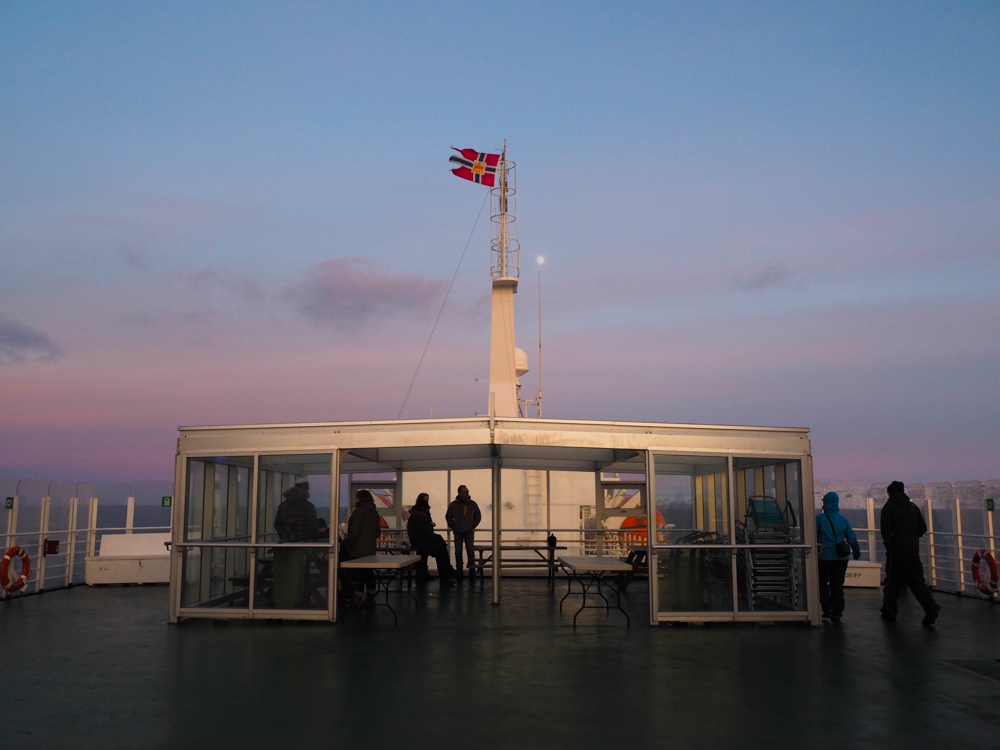
The Asians do not come for cruising
The importance of Hurtigruten in Norway’s everyday life is best demonstrated by the fact that in 2011, between 16th and 22nd June, the Norwegian television service broadcasted live the whole cruise of one of their ships. The 135 hours-long TV program, recorded by 11 cameras on board, even entered the Guinness book of records as the longest non-stop documentary without interruption – no advertisements or news were shown. The voyage was followed by 6 million viewers from 148 countries, among them 3 million Norwegians, almost one third of the country’s population.
I booked the Tromsø-Kirkenes round-trip. It took one and a half days to get from Tromsø to the final stop, almost to the Russian border, and then back again on the same route. This time I sailed on the Vesterålen, built in 1983, with the capacity of 516 passengers. She is the smallest in the fleet, and compared to Trollfjord from my last trip, her fares are more low-cost. There is no double-deck panoramic lounge or open-air jacuzzi, although I would probably not dare to enjoy the latter.
Two-third of the passengers were German, the rest French, Scandinavian, British or Hungarian. Interestingly, although Asian travelers are not keen on cruising and not many take the voyage, they were the majority of tourists on tours in Tromsø . The “Asian-rush” in the last couple years can be explained with a superstition widespread in China, Japan and Singapore: that children conceived under the northern lights will be exceptionally intelligent. A hotel staff member mentioned, that Asian visitors on their honeymoon often ask for a wake-up call when the lights appear, but not for the same reason as I, to rush outside and take pictures.
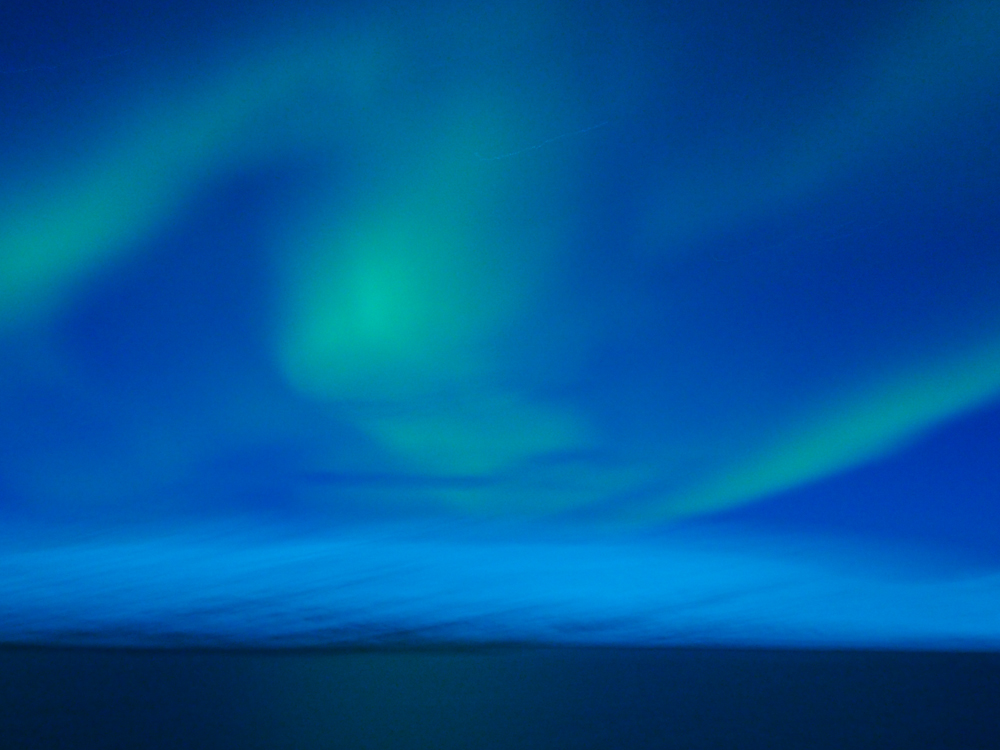
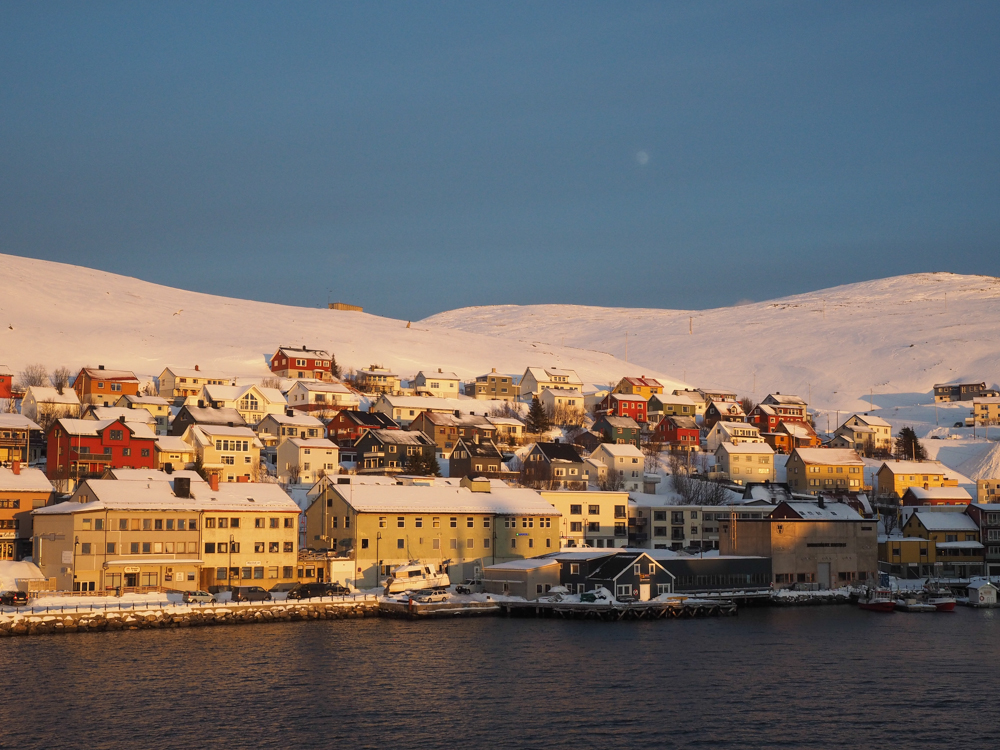
What can you do on a winter cruise?
The cruising company offers a great many optional tours and programs. At the beginning of the cruise I signed up for two of them, the already mentioned tour to Nordkapp, and for a visit to an ice hotel in Kirkenes. I could have gone for dog-sledging (but I had already tried that in Tromsø) or gone on a snow mobile ride in the night (but I found it not particularly eco-friendly).
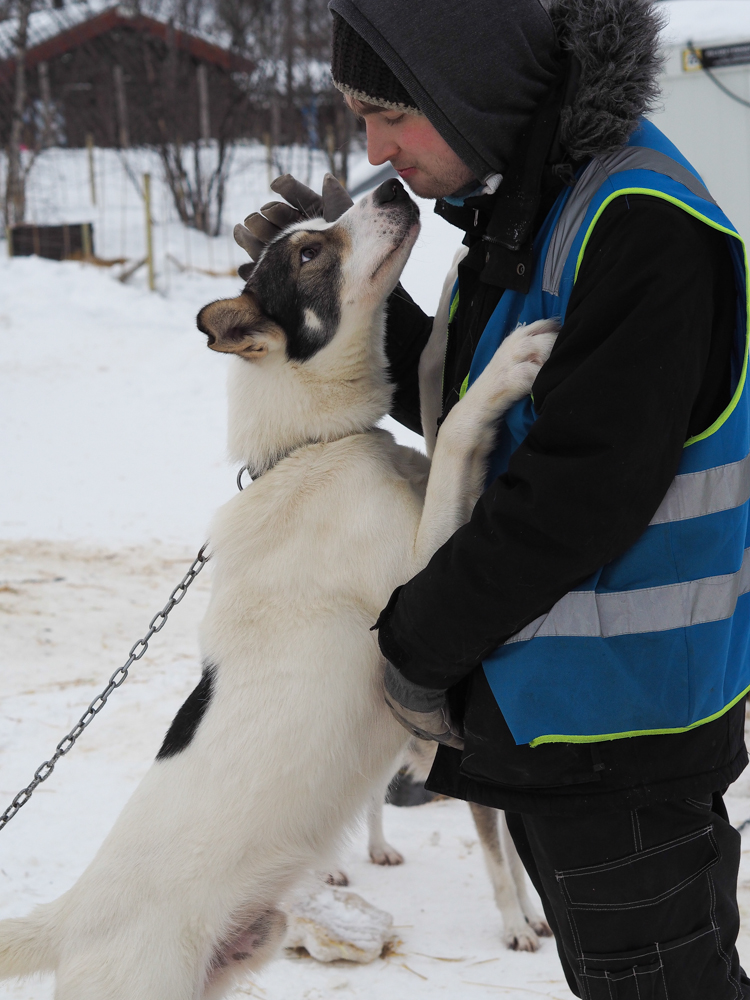
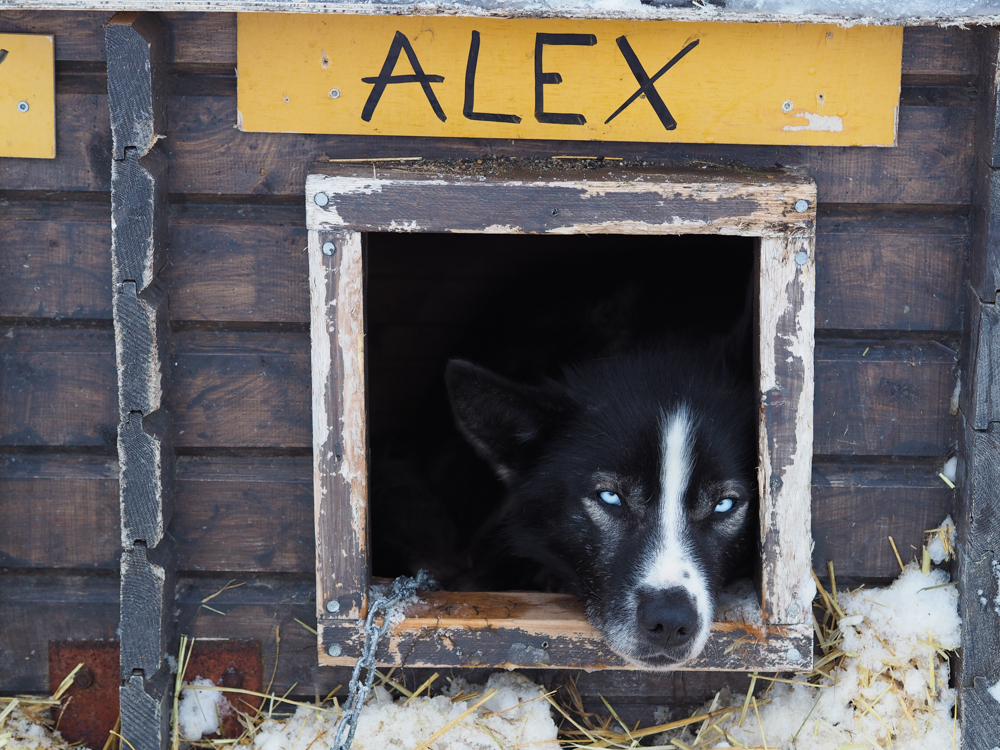
For 495 Norwegian crowns I could have visited the meridian monument in Hammerfest in a comfy bus, but in a swift tempo the tour can be done on foot as well during the 1½ hours that we spent in the harbor. The programs were not only held during our stay in the harbors, but also while we were sailing: they were entertaining us with different presentations and screenings – the funniest was when the Norwegian sailors were teaching the German pensioners how to tie different knots.
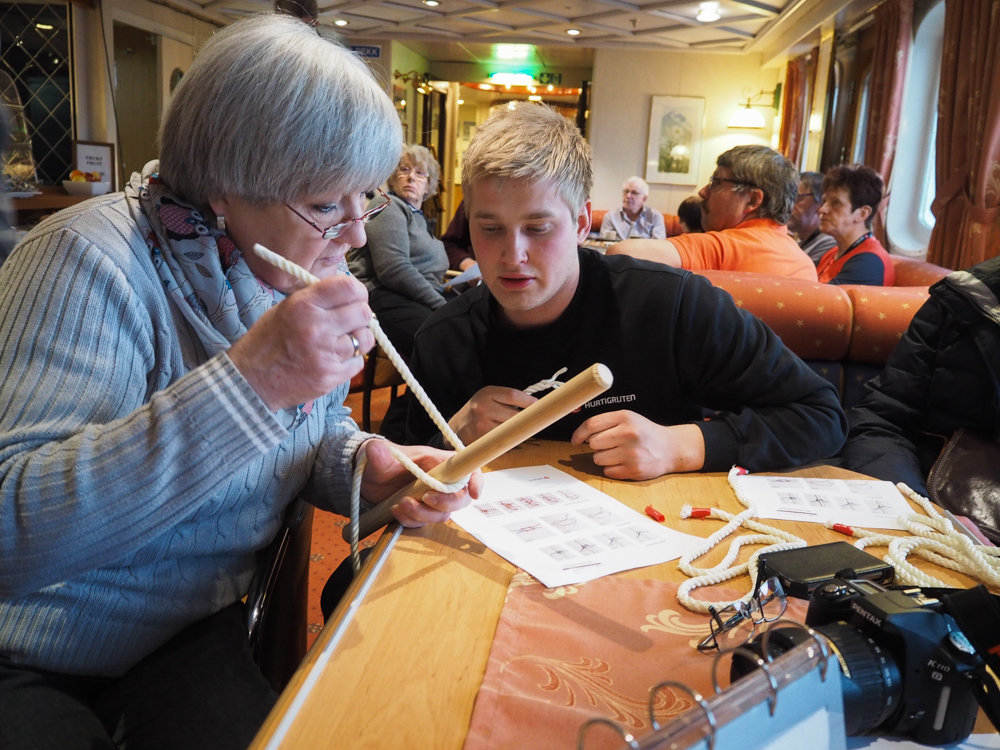
At our final stop in Kirkenes, many attractive programs were offered. Some passengers in a small bus went off near the Russian border for dog sledging. Others joined the fishermen for ice fishing. I chose the most popular trip: to visit the ice hotel in Kirkenes.
Sometimes the hotel starts to melt by the beginning of April
The hotel itself consists of three parts. In the stone building you can find the restaurant and the baths. New wings are attached to this main part every year, consisting of the ice rooms and the ice reception. Finally, there are some wooden cabins with large glass windows offering fantastic views to the snow-covered landscape or even better, the northern lights.

However bitterly cold it may be outside, in the room a constant climate of 4 °C below zero is kept. The beds are also made of ice, but fortunately covered with mattresses, and of course every guest gets a cozy, warm sleeping bag, some woolen socks and a balaclava. Our tour guide mischievously commented, that those who wish to share some intimate moments can get a double sleeping bag. Although, I guess there is not much chance for intimacy as the rooms do not have doors, and are only separated by curtains from the corridor.
A dozen rooms share one bathroom. Those who need to use it often during the night, might rather choose a room close to the toilet. Anyone who is not up to the ice-cold drill, can go up to the restaurant and spend the night in an armchair. Next to the hotel is situated a reindeer and dog breeding farm, so a dog-sledge ride is always an option.
The hotel usually opens in December and operates until April. I do not envy the administration staff, as they never know until what date they can accept bookings. When the winter is shorter, or milder, the season might last only until the beginning of April. And when the hotel starts to melt, they have to cancel the extremely expensive bookings.
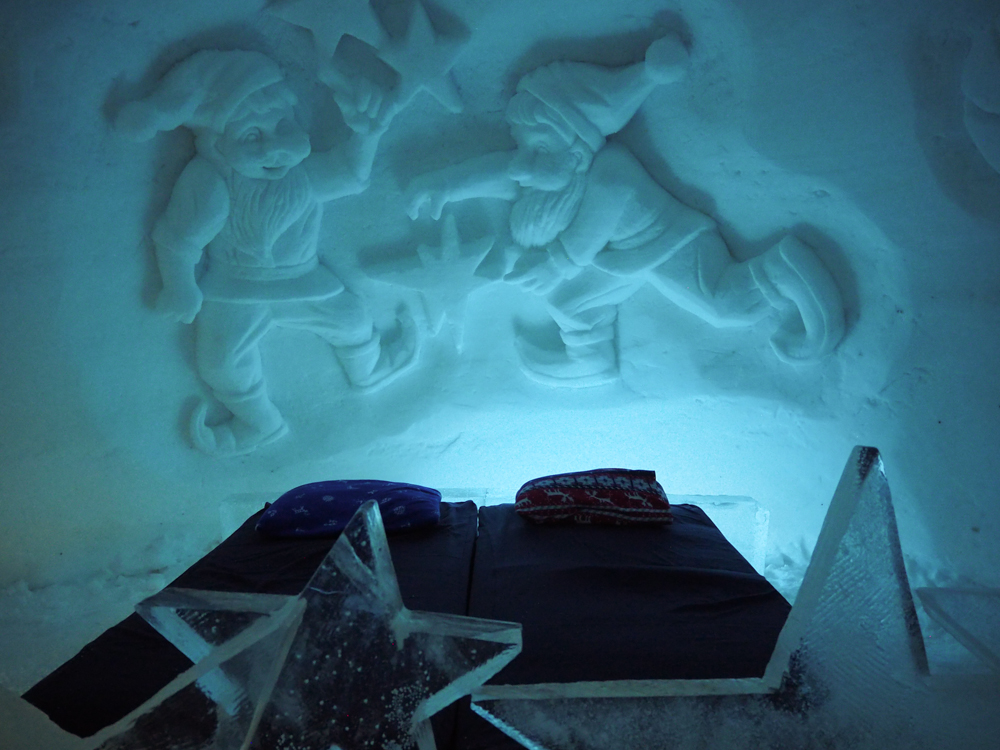
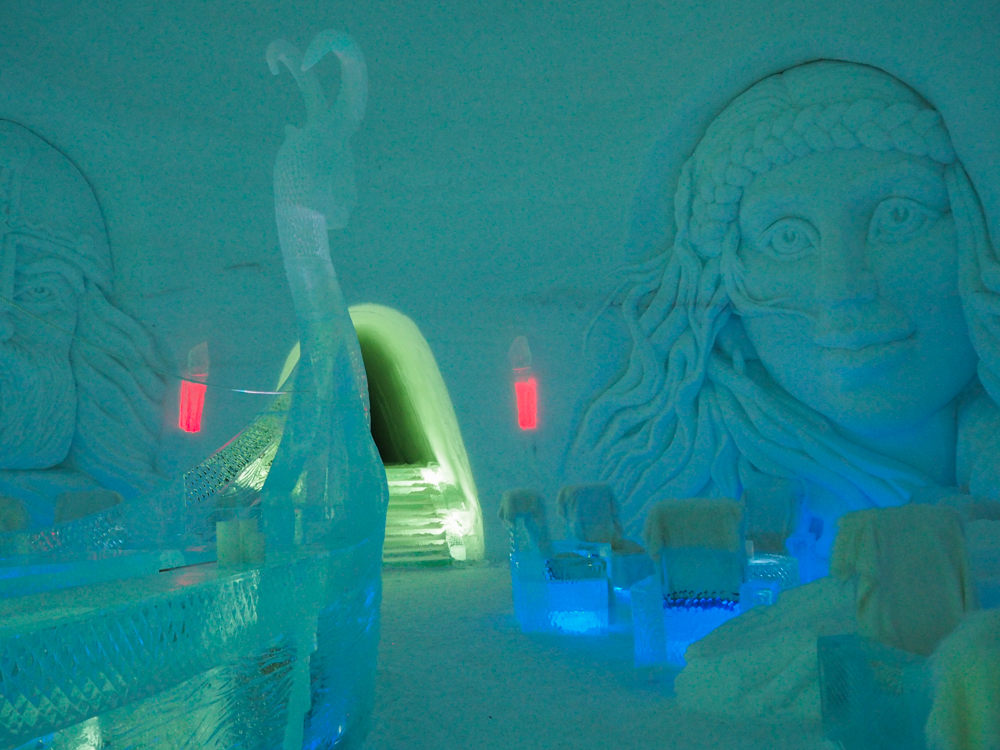
To please the Russians a huge mall was built
Kirkenes is only three kilometers from the Russian border, so it is no surprise that shopping tourism flourishes here. The Russians come here mainly for diapers, and the Norwegians visit their neighbors usually for the cheap gas. In Russia they can fill their tanks for half the price. According to our guide in Kirkenes, a couple of decades ago the Russians came in jalopy Ladas, today they arrive in fancy cars and are not bothered by Norwegian prices.
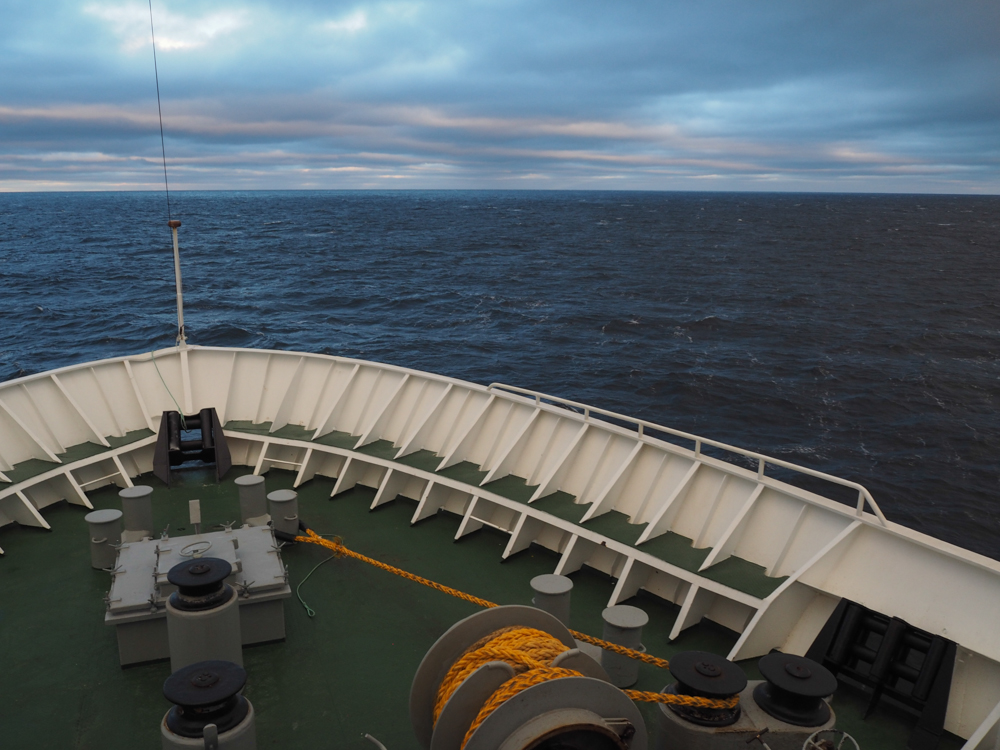
A huge mall was built especially for the Russians, which the residents of Kirkenes would not be able to maintain. Both sides make efforts to keep up the good-neighbourly relations. “If you want good neighbours, yourself should be one”- wisely says our tour guide. He then pointed to the Russian consulate with a smirk, which is the only building in the city that has bars on its windows. “Apparently, they are afraid of us” – says the guide, and adds that in Norway only 150 soldiers protect the border, on the other side it’s 4000.
Finally, one more interesting thing. Near Kirkenes, where the Norwegian, Finnish and Russian borders meet, three different time zones meet as well. “Just image what it is like on New Year’s Eve” – pointed out our always jovial tour guide.
The three days flew by very fast, and I wish I had taken the whole route with the ship. Nevertheless, this small sample was quite an experience, and I really hope that some day I may cruise to one of the polar zones as well.
